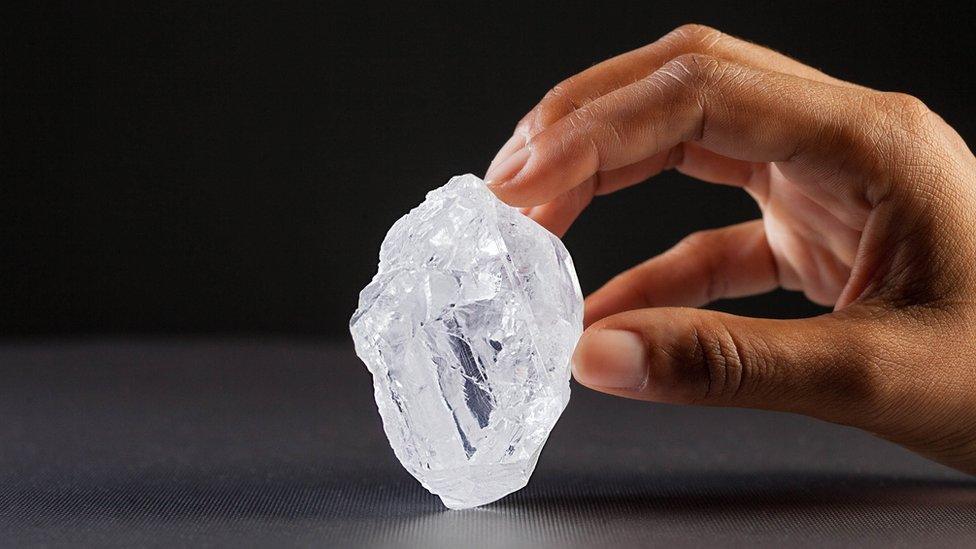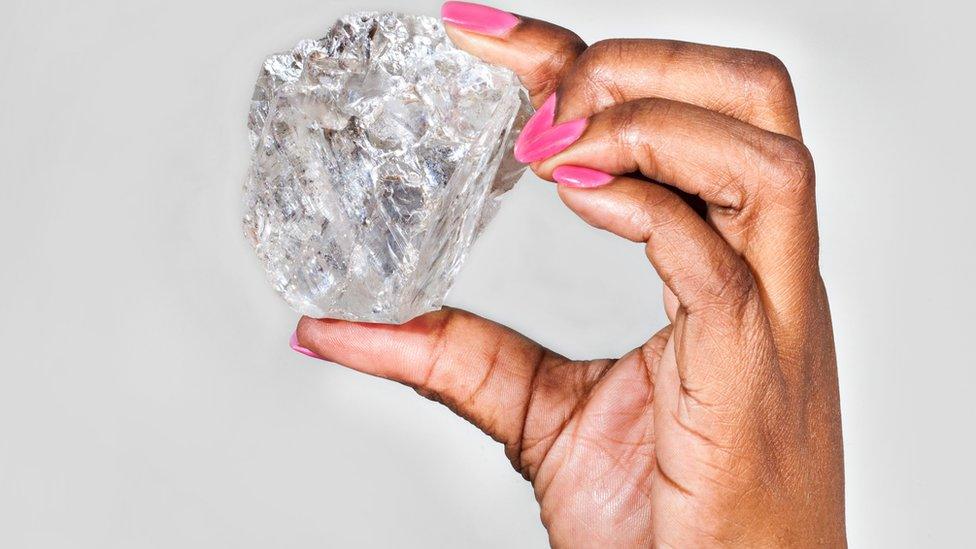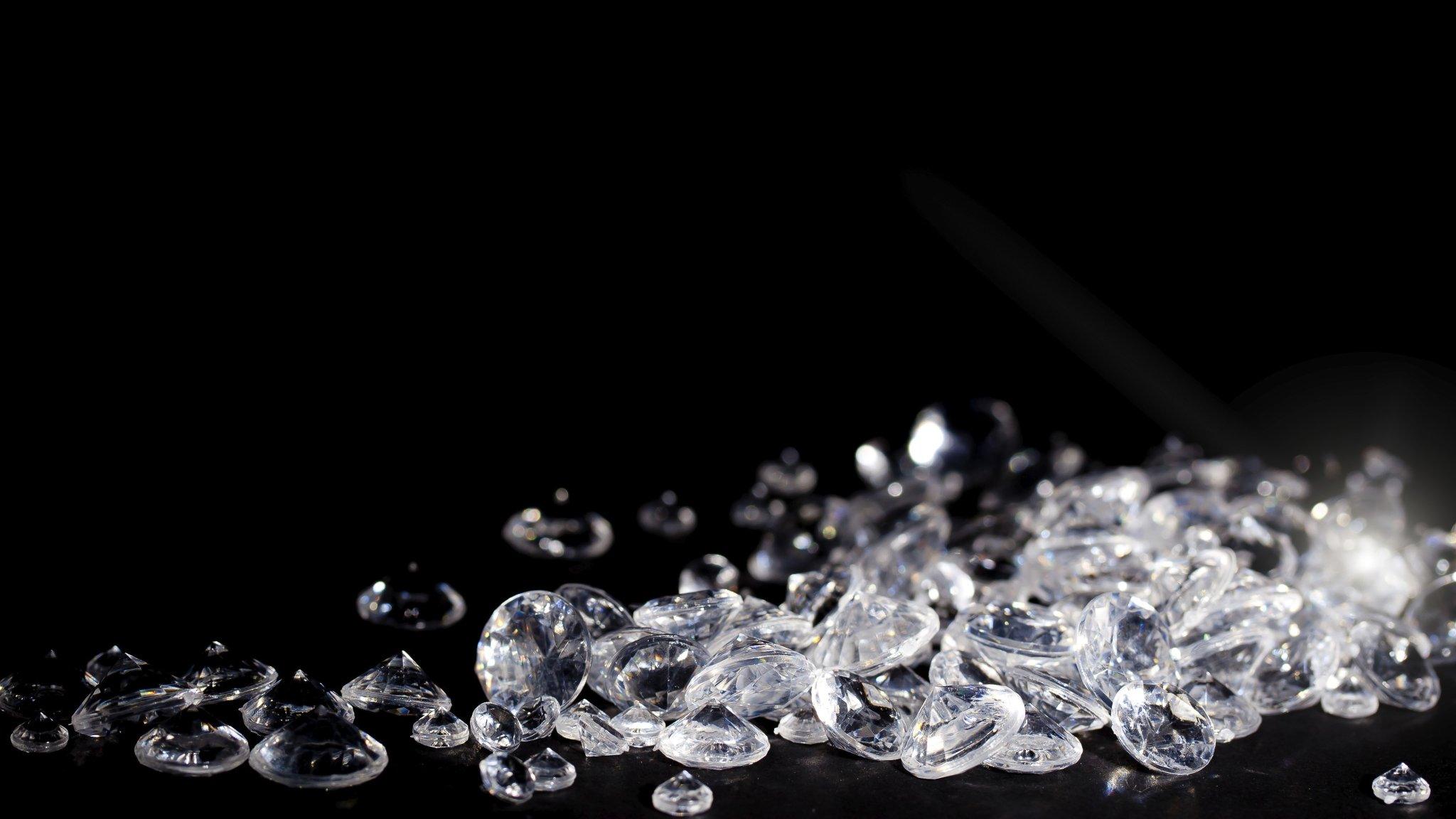Lesedi la Rona diamond fails to sell at Sotheby's auction
- Published
The Lesedi la Rona failed to sell at the Sotheby's auction in London
The world's largest uncut diamond has failed to sell at an auction in London.
The Lesedi La Rona diamond was expected to fetch more than £52m but bids fell short of the minimum reserve price at Sotheby's in Mayfair.
The 1,109 carat gem - the size of a tennis ball - was unearthed last November in a mine in Botswana.
It is believed to be more than 2.5 billion years old and it was the first time a rough diamond of such a size had gone on public sale.
The Lesedi la Rona, which means 'our light' in the Tswana language spoken in Botswana, was discovered by Lucara Diamond Corp's Karowe mine.
Lucara will be "retaining" the stone, it said in a statement.
Why have so many huge diamonds been found recently?
Speaking before the auction, David Bennett, worldwide chairman of Sotheby's jewellery division, said the diamond's discovery was "the find of a lifetime".
"Every aspect of this auction is unprecedented. Not only is the rough superlative in size and quality, but no rough even remotely of this scale has ever been offered before at public auction," he said.
According to a study by the Gemological Institute of America, the rough diamond's colour and transparency "exemplify" type IIA diamonds.
Stones in this group are "the most chemically pure and often show extraordinary optical transparency".
Nothing of the size and quality of Lesedi La Rona - which measures measures 6.64 x 5.5 x 4.2cm (2.6 x 2.1 x 1.6in) - has been found in more than 100 years.

What are IIA diamonds?
IIA is the most chemically-pure type of diamond
Less than 2% of all gem diamonds are classed as IIA
They were first identified as originating from the famed Golconda region of India
Type IIA diamonds are now recovered in all major diamond producing regions
Famous examples of Type IIA diamonds are the Cullinan I and the Koh-i-Noor, both part of the British Crown Jewels.

- Published29 June 2016

- Published19 November 2015

- Published21 August 2013
